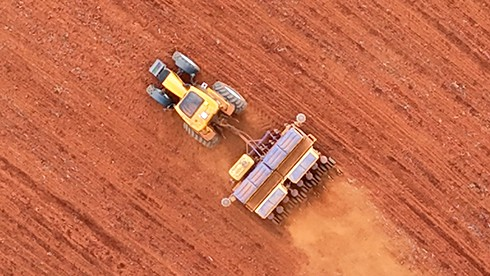In today’s agricultural landscape, efficiency and precision are more important than ever. At CHCNAV, we recognize the vital role that an automatic steering system plays in modern farming. One of the standout features of these systems is their ISOBUS compliance, which enhances communication between various machines and implements. In this article, we will explore the benefits of ISOBUS compliance and how it can improve farming operations.
Seamless Communication Between Machines
One of the primary advantages of an automatic steering system with ISOBUS compliance is the seamless communication it enables between different machines and implements. This interoperability allows farmers to connect various equipment, such as tractors, seeders, and sprayers, ensuring that they work together efficiently.
With ISOBUS, farmers can operate multiple implements from a single control terminal, simplifying the workflow on the farm. This integration minimizes the need for multiple displays and controllers, making it easier to manage operations and reducing the time spent on setup and adjustments.
Enhanced Data Collection
Another significant benefit of ISOBUS compliance is the ability to collect valuable data during operations. Features such as UT (Universal Terminal), AUX-N (Auxiliary Control), TC-BAS (Task Controller Basic), TC-SC (Task Controller Standard), and TC-GEO (Task Controller Geo) are integral to the functionality of an automatic steering system.
These features allow for the collection of real-time data on various farming tasks, from planting to fertilization. By gathering this information, farmers can gain insights into their operations, such as seed placement accuracy and fertilizer application rates. This data-driven approach enables farmers to make informed decisions, optimizing their practices for better yields and reduced waste.
Automated Implement Adjustments
ISOBUS compliance also facilitates automated adjustments of implements based on the collected data. With the help of an automatic steering system, farmers can ensure that their equipment adapts to changing conditions in real time. For instance, if the system detects variations in soil type or moisture levels, it can automatically adjust the planting depth or fertilizer application rate accordingly.
This level of automation not only enhances operational efficiency but also helps in resource management. By ensuring that inputs are applied precisely where needed, farmers can reduce costs while improving crop health and yield.
Optimizing Resources for Better Decision-Making
As we face increasing pressures to produce more with less, the ability to optimize resources becomes critical. An automatic steering system equipped with ISOBUS compliance aids farmers in making informed decisions about their operations. The connected systems provide a comprehensive overview of farm activities, allowing for better planning and resource allocation.
With access to detailed data and automated adjustments, farmers can minimize inputs such as seeds, fertilizers, and water, all while maintaining or improving yield levels. This not only supports profitability but also aligns with sustainable agricultural practices, contributing to environmental stewardship.
Conclusion
In conclusion, the integration of ISOBUS compliance within an automatic steering system offers numerous benefits that can enhance agricultural operations. From seamless communication between machines to improved data collection and automated adjustments, these systems empower farmers to optimize their resources effectively. At CHCNAV, we believe that embracing such technologies is essential for achieving greater efficiency and sustainability in farming. As we continue to explore innovative solutions, we are committed to supporting farmers in their pursuit of excellence in agriculture.
